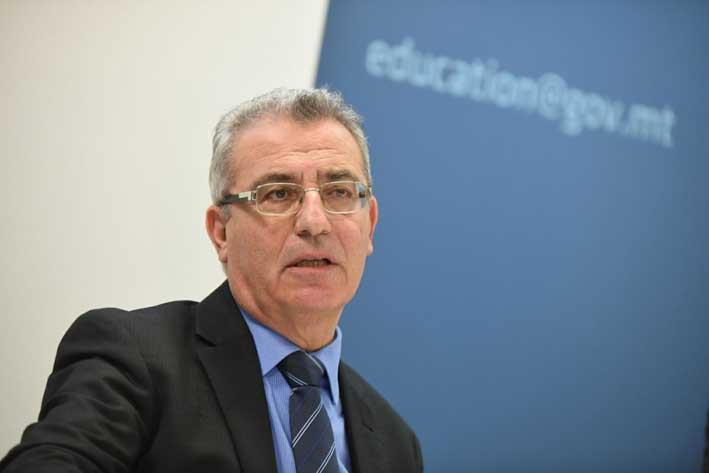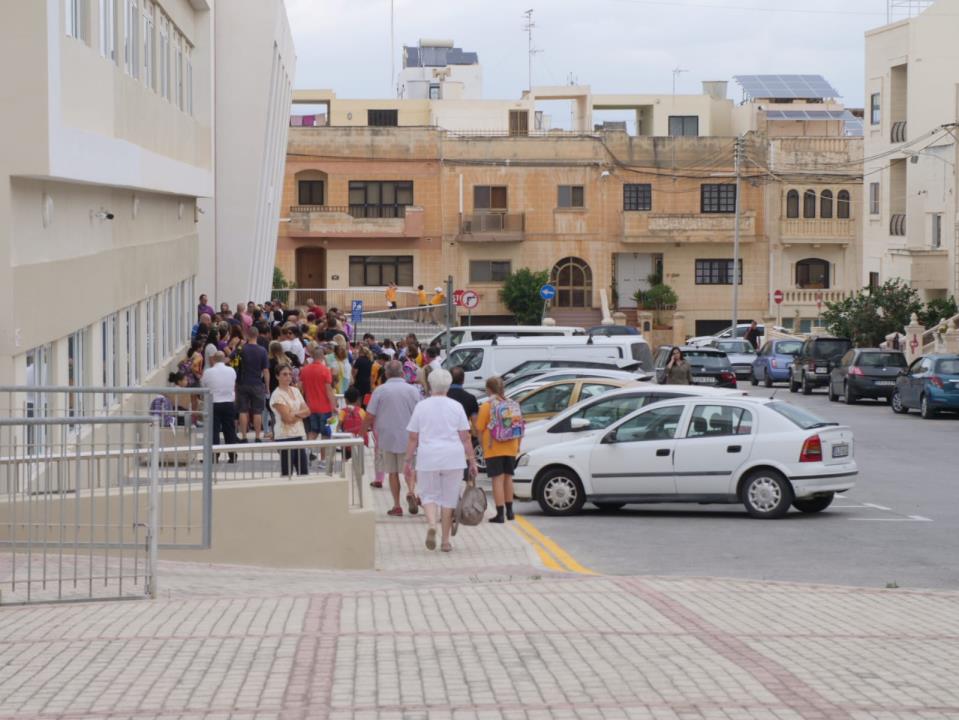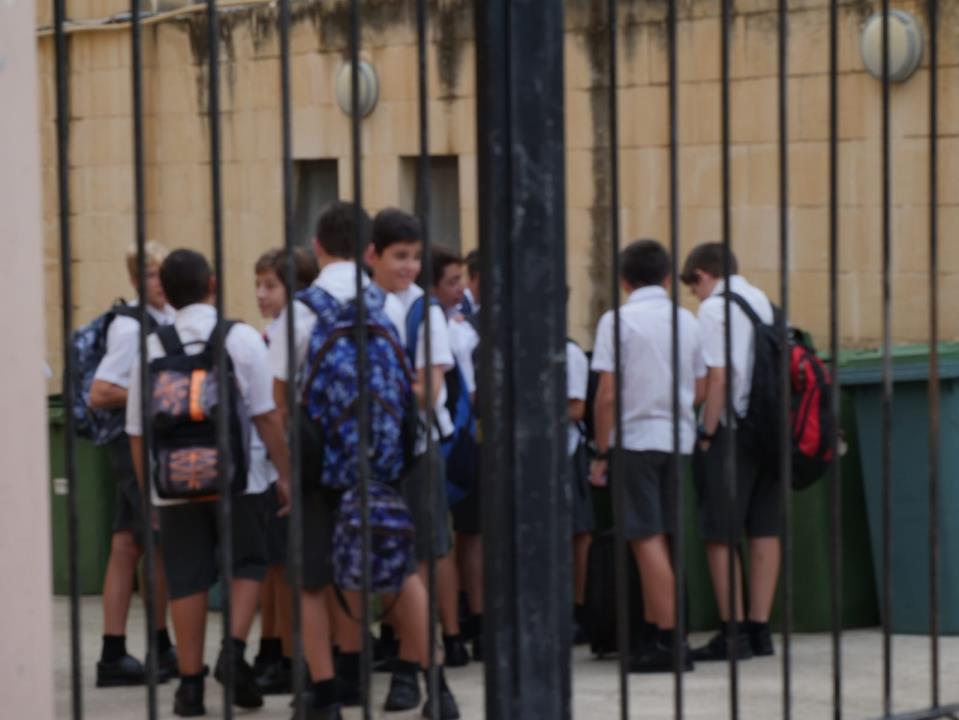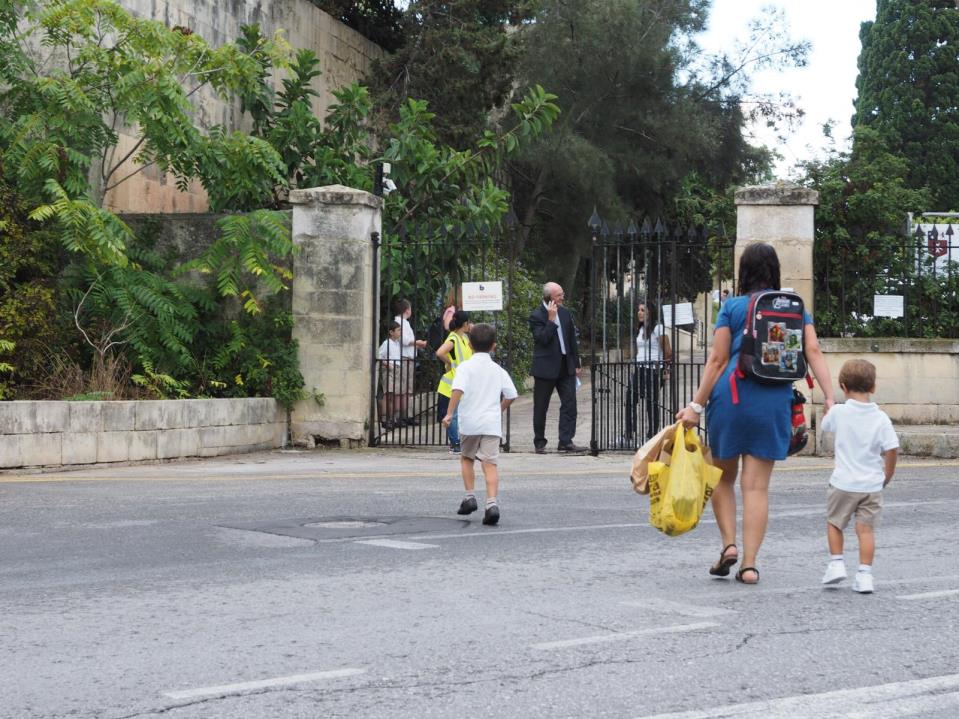Having seen the free transport reforms at work over the past days, what is the view of the MUT on how this reform has gone thus far?
As a union we haven’t received complaints from our members, who are educators who may be doing transport supervision and such before and after school hours. As such we haven’t seen more than the usual; that we have a late van or a van that doesn’t come and has to be called was the norm – we hope that obviously this doesn’t remain the norm of course and we hope that with the new agreement will make for a more efficient service as in the end its the students who will suffer. However we haven’t received any particular complaints on the system itself.
Vis-à-vis supervision however, we have a number of questions. As you know both electoral promises were that free transport with supervision would be provided; however, the government has not implemented supervision. They declared at the end of this summer that they weren’t going to implement it and that instead they would be giving a gadget to students, a tracking device – i call it a chip – to see where students are going to be. We have massive doubts about this; massive doubts even in an ethical sense – its animals that are chipped not students. Then there is the question of what is going to be done with this tracking; are parents going to stay sitting with their phones worrying about whether they’ve gotten into class, or on the van, or what’s happening to them and so on?
If there was a supervision system – as there was meant to be – that would be the ideal. We criticised the government, saying that they don’t have with what to work with in terms of supervision – and we told them as much even in summer, when they were insistent that they did have enough to work with, as from feedback we got from our members we saw that interest was minimal especially when it came to secondary schools. There was more in primary schools, but this is down to the fact that primary schools are locality-centric whilst secondary schools generally have a much wider catchment area that you cannot conjoin a person to a specific locality. As a result many see it as a hassle, especially when there are other ways they could work – such as the Breakfast Club or the Klabb 3-16, which is working very well. Therefore I don’t think it was feasible and I think that’s one of the reasons why it hasn’t occurred.
It worries me especially to have young children without supervision. In the case of secondary students, yes there is the problem of bullying, which is there and which unfortunately will remain there; but to have young children who have alighted onto a coach with nobody monitoring what is happening is, from an educational perspective, very worrying. I hope that the government seriously considers that at least on specific routes and in certain cases they provide supervision there.

Minister for Education Evarist Bartolo recently told this newsroom that supervision for the free transport scheme had to be handled by schools. What is the MUT’s view on the situation?
Independent schools have long offered supervision; the mechanism was that transport would be organised by the parents, there would be a call for educators and non-educators interested in providing supervision paid for by the parents, and whoever wanted could take advantage of this. Whether the mechanism has been kept after the reforms, I have my doubts.
State schools and church schools do not have supervision offered; it cannot be the school to do supervision arrangements – transport was always centralised and it has to be such. I think that if the government has been unable to provide supervision, then a school definitely won’t be able to organise it either.
Will it ever come to the point that teachers or LSAs are obliged to provide supervision themselves?
If it does, the MUT will refuse it. We made this clear when meeting the government on this matter. We were summoned to meet the government twice, first when a study was being conducted on the feasibility of the supervision and again after the election. Both times we made it clear that we have no problem in educators working in other sectors, but it has to be voluntarily.

Recently we have seen another issue emerge related to photocopying, and another union for educators; the UPE – Voice of the Workers, has issued directives related to this matter. Is the MUT following this issue? If so, how is it dealing with it?
We came to know about this issue around two months before the end of the last scholastic year and met the government about it. Two schools were taking part –there were more initially but they dropped out – in this government pilot project. There were a number of issues which we tackled during the discussions; but still we saw that there were still a number problems with the system. With the summer gap, there wasn’t as such the need for discussions; but at one point we received news from schools that the government was going to implement this system in all schools.
As soon as we got wind of this, we gave directives to the government telling them that they could not implement this before agreeing with the MUT and told teachers not to use the Government Printing Press (GPP). These directives have been kept till the beginning of the scholastic year.
The government met us to try and find a solution; the principal issue was the need for day-to-day printing. Teachers, especially with the new syllabi coming in, need to prepare for lessons day-by-day. Normally teachers used to prepare things, send them to their preferred stationer that night and pick them up the following morning. This is something that the government did not want to accept – they wanted everything to work under the GPP. The problem here is that the GPP has a timeframe – one cannot give them material in the evening and have it printed the day after. The timeframe is normally around 2 to 3 days, which isn’t ideal at all for teachers.
We managed to agree with the government on the possibility of the day-to-day with local stationers, these being listed and identified by the government, and then to present the receipt. As till now [the time of writing] this list has not been provided, and so this is the first breach. Furthermore, the feedback from our members from the two schools taking part in this project, is that the GPP has not held to the agreement; their material either didn’t arrive on time, or was swapped or had parts; and in the end it is evident that the GPP cannot cope with even two schools, let alone with all the schools.
It is pertinent to note that this was brought up by the MUT first, and it was the MUT which followed the issue throughout. There was another Union which at one point recently came in to the fray and took on the issue, something on which I will not comment.
Regarding this union, the UPE, what is the situation between them and the MUT? Are the two still not seeing eye-to-eye, or is there some form of collaboration on some matters?
There is no collaboration or communication with the other union, and definitely there cannot be because of the attacks by this same union against us. Our members criticise us and they are right to do so, saying that our job is to combat the government and employers to get better conditions for our members. They don’t want us to get involved in petty issues with other entities, including with this union.
If you note in fact we have held back; every time this union has attacked us, we have not reacted – and we will not react, we don’t need to; we do our jobs, we know how to do it, and the results speak for themselves.

Has the MUT put any suggestions forward for inclusion within the upcoming Budget?
One of the essential things for us, and what we hope will be addressed in the Budget, is related to independent schools.
This year, from December to August, we closed four agreements; one for state schools, one for ITS, one for MCAST, and one for Church schools. We are currently discussing an agreement with three independent schools. We will be opening discussions with another soon, whilst at the beginning of next year we will open with two more.
The problem we are seeing in this field is that whilst state and church schools got a financial increase, independent schools are falling behind. Therefore we have a situation where independent schools are losing people because they are moving to state or church schools. We expect this to increase because the nature of the agreements signed means that the peak financial packet will be reached in three years.
So far it seems like only one independent school can match what is offered at state or church schools in terms of financial packet. The other schools are not ready to match it, and this means that there is a financial discrepancy. The discrepancy is not small; it’s from €300 to €3,000 a year. Salaries are what they are in the country, and €3,000 makes a difference.
The ministry was in discussion with the Independents School Association, and at one point we were told by the association that they are finalising an agreement for the government to give them financial aid. Some weeks ago though, they received a letter from the government saying that due to state aid regulations from the European Union they cannot help the said schools, and so the discussions dissolved into nothing.
The schools now must seek other options, and we have reports of them already raising their fees in fact quite substantially to cope. Despite this though, they are still not ready to match what is being offered in state and church schools. Our appeal is for the next budget to include a mechanism to help either independent schools or parents, as helping the parents automatically helps the school as well.

With the new scholastic year, we have yet again received reports of shortages of teaching staff. Where are these shortages and in what subjects?
Till last week, the shortages were principally at Primary level and in Maths and English. Sciences also always see shortages, but they are not as pronounced.
The information we have as of now says that the shortages are not as bad as last year’s. However, we still believe that the ministry’s projections were incorrect because they didn’t take into account some factors.
Firstly you always have a number of people who resign at the end of summer and are ready to pay off their notice period to stop immediately; others who take a promotion; and others who take maternity or paternity leave. These are things you can project by taking the averages of each year - they’re not numbers that you can’t quantify. The ministry thought in July that they were closed and ready to go, but they didn’t project the losses of educators in September.
The situation seems to have been mitigated somewhat with recent calls for educators by the ministry, but there is still something that is worrying us; the workload. Even though today schools have opened and are running smoothly, one must think ahead to the influenza season. We think that when this comes, some schools are going to suffer, because they will not have personnel as replacements. If a teacher has a full load, there is nowhere for them to replace – so you end up with classes without a teacher.
We have long been telling the government that there is a discrepancy between the information the government has and what the schools have. The ministry is saying that there are few teachers with a full load; but information we have says that there are a lot of teachers with a full load. What we are doing now is taking these on a case-by-case basis and seeing with the ministry why they have a full load and who determined that they should have a full load and what measures, if any, can be done to mitigate.
How do you quantify a full load for a teacher?
The loading in secondary is 25 lessons per week. That is an exceptional load – the normal is 24 plus one replacement lesson.

Does the Master in Teaching & Learning (MTL) course have anything to do with this?
We discussed the MTL a lot, and we criticised it mostly on its timing. We think that the timing had to be tied with a number of other things such as an awareness campaign and a raise in stipends. However, this did not happen and MTL came in anyway.
When there were the Bachelor of Education courses, the numbers were already reducing. When the MTL course came in, the numbers slumped. The primary reason for that is that when someone already has a first degree, the person is faced with three choices. The first is that the person finds a job, the second is to continue a master’s course, specialising in their area, or else – the third option – to choose the MTL. I mentioned the MTL last as it usually the last option in terms of preference. You always have a number of people whose choice always was for teaching; but we need to incentivise even more youths to come into the profession.
Another factor is that there are lists of eligible people for vacancies and who pass interviews, who are then not engaged by the government. This is something which has a big effect – if you have come into a course and you see that the government is not employing you, the message being sent to prospective students is “don’t come into this course because you won’t find work.” This message from the ministry has been there for a number of years because there are areas when it’s been years since new people have been employed, or when people are employed, they are recruited in minimum quantities.
How can this be though if there are shortages in teachers?
We said that there are shortages in certain subjects. In languages, for example, there are no shortages. Every person who applies and passes the interview remains on a pending list. What normally happens then is that the government offers a job to teach at primary level – but whoever it is says that they studied for secondary level and learnt a specific language and so they wouldn’t want to teach at primary level. Aside from that then, the graduate may try and get into an independent school or a church school. The person is going to be demoralised however; that they spent five years studying, and then see people who could have done less time studying already have a good job. So what happens is that through that demoralisation you give the message to not pick that course as the likelihood of finding work with it is low.
What can be done as a solution for this shortage?
One thing we proposed to the government and to university is to try attracting more youths to the profession. Other professions, such as nursing, are doing a lot of outreach with youths, which is very good, and education has to be doing the same. We have been saying this for quite a while to the ministry now. Campaigns are good to show the positives of the profession; and they are important to reach children in secondary to start moving towards the profession.
The University should also be looking at raising the stipends for our courses. Students in science faculties for instance get higher stipends to attract more people, as do ICT students. In education this doesn’t exist, and I think it’s time to look at this model to try and attract more people. We need to be doing everything to encourage more and more youths to take up this profession.